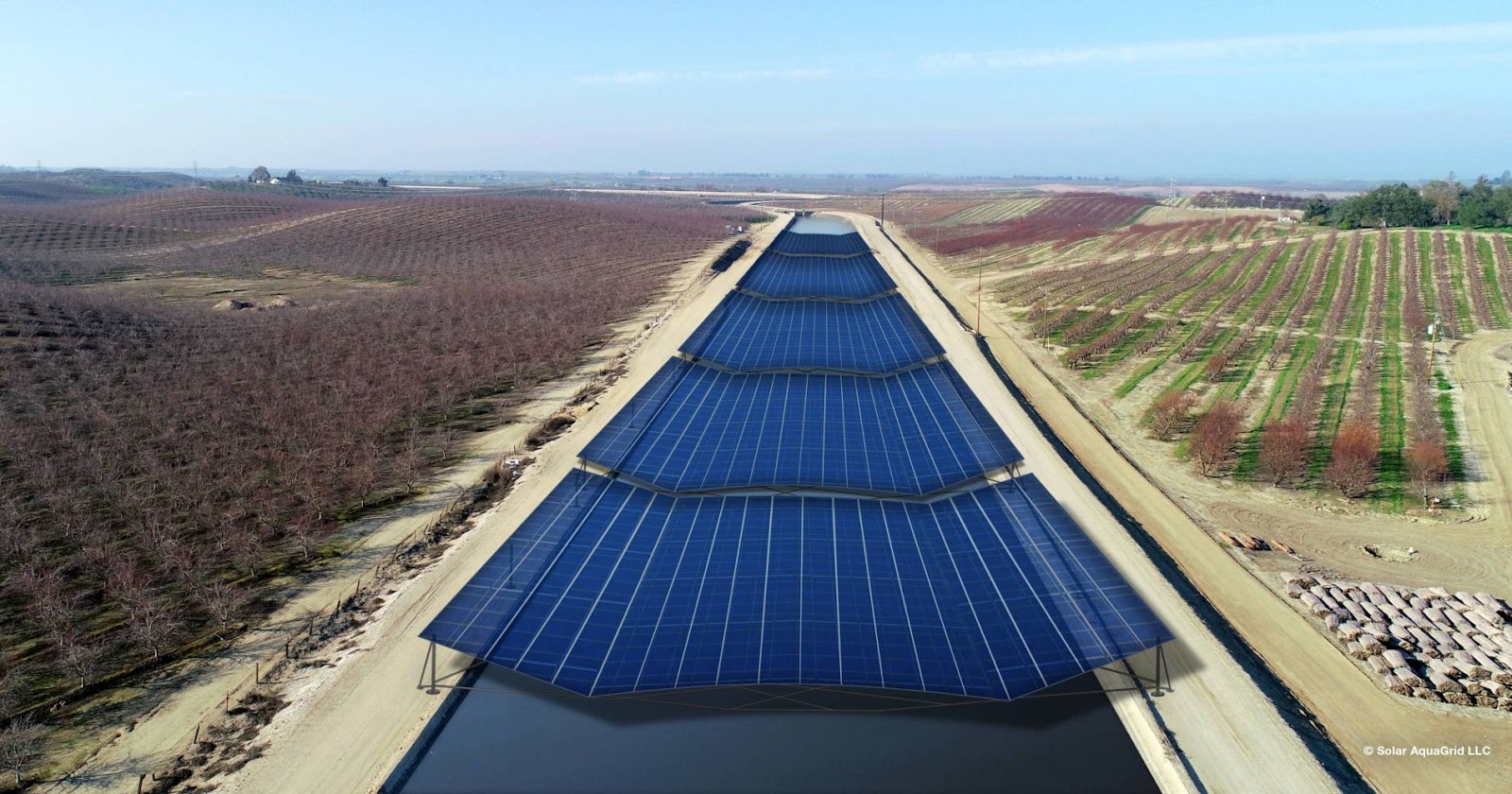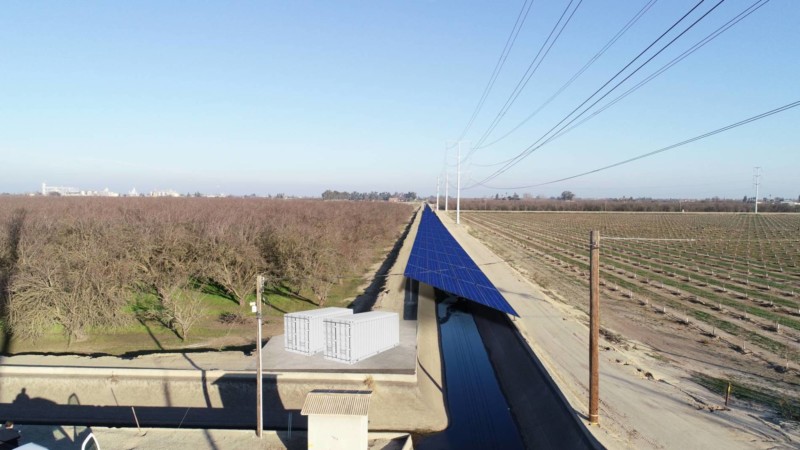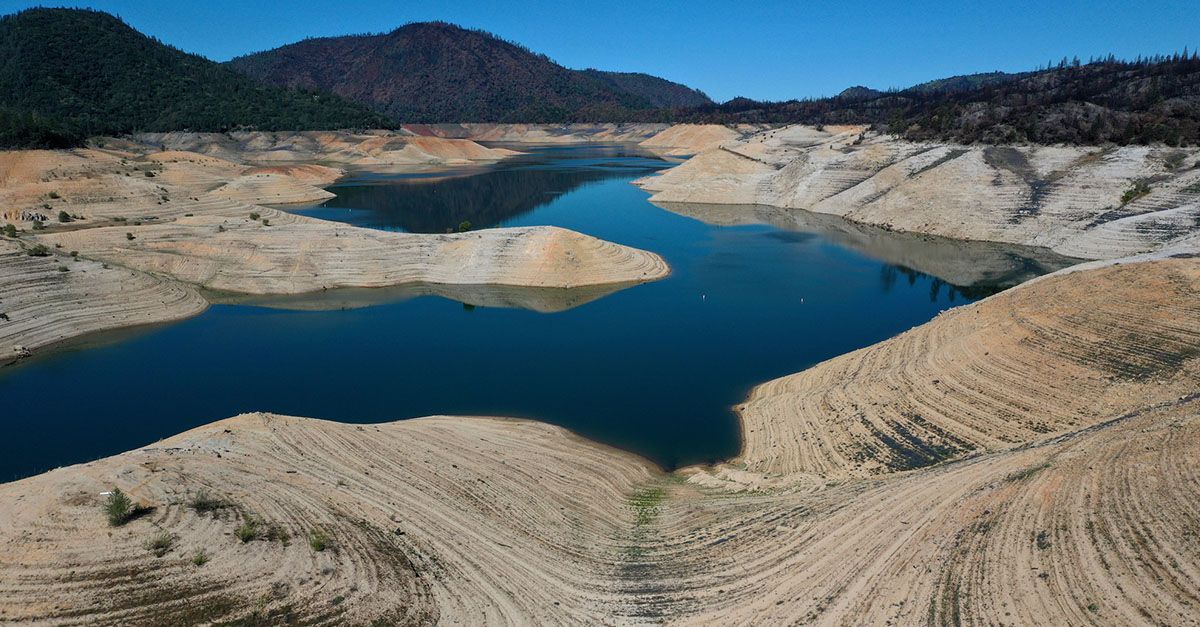California has plenty of sunshine but not plenty of water, and dealing with the latter problem requires the kind of innovation the Golden State has become known for the world over. That’s the idea behind a new pilot program that will use what the state has plenty of (sunshine) to provide more of what it desperately needs (water).
The program, called Project Nexus, involves building solar panel canopies over portions of existing canals that belong to the Turlock Irrigation District (TID). This publicly owned irrigation district provides water and power to much of California’s Central Valley.

Photo Courtesy tid
Billed as the first-ever solar panel-over-canal development in the United States, the project aims to help the Golden State become more water resilient while promoting renewable energy.
Part of the pilot will focus on assessing the reduction of water evaporation that results from mid-day shade and wind mitigation.
Here are the Project Nexus goals, as listed on its website:
- Demonstrate proof of concept of narrow and wide-span canal coverage of solar panels
- Increase renewable power generation
- Improve water quality
- Reduce vegetative growth in the canals
- Reduce water evaporation in canals
- Investigate integration between renewable power generation and energy storage
It’s an important project because of its potential impact on helping California deal with its growing water crisis. Two years ago, Governor Gavin Newsom declared a statewide drought emergency as California reached near record-low levels in its largest reservoirs, Inside Climate News reported.

Photo Courtesy tid
The problem was especially severe in parts of the Central/San Joaquin Valley, a major agricultural region that provides food for much of the U.S. and the world. Allocations from state and federal water projects hit zero for many farmers, forcing them to let nearly 400,000 acres lie dormant, according to a 2022 study from the nonpartisan Public Policy Institute of California.
The Turlock Irrigation District provides water to 4,700 growers who farm roughly 150,000 acres in the San Joaquin Valley. It was formed in 1887, making it the oldest of California’s irrigation districts.
Project Nexus is a public-private-academic partnership that includes TID, the California Department of Water Resources (DWR), Solar AquaGrid, and the University of California-Merced.
Ground was broken on the $20 million project in October 2022 and is expected to be completed in 2024. Existing TID infrastructure will be used to keep costs low and efficiency high while supporting sustainable farming. Project managers will also install energy storage to research how storage facilities can help the local electric grid when solar generation is suboptimal. The state of California provided funding.

Photo Courtesy Solar AquaGrid
“In our 135-year history, we’ve always pursued innovative projects that benefit TID water and power customers,” TID Board President Michael Frantz said.
“There will always be reasons to say ‘no’ to projects like this, but as the first public irrigation district in California, we aren’t afraid to chart a new path with pilot projects that have potential to meet our water and energy sustainability goals.”
About 8,500 feet of solar panels are expected to be built over three sections of the TID canals. The water in the conveyance infrastructure has the potential to cool the panels, which should increase their efficiency. In addition, the solar panels provide shade and wind protection over the water, limiting the amount of water that evaporates and reducing aquatic growth to improve water quality.
A 2021 UC-Merced study found that using solar panels to cover California’s water delivery system infrastructure can result in significant water, energy, and cost savings for the state.
The study estimates that about 63 billion gallons of water will be saved annually – enough to irrigate 50,000 acres of farmland or meet the residential water needs of more than 2 million people.





